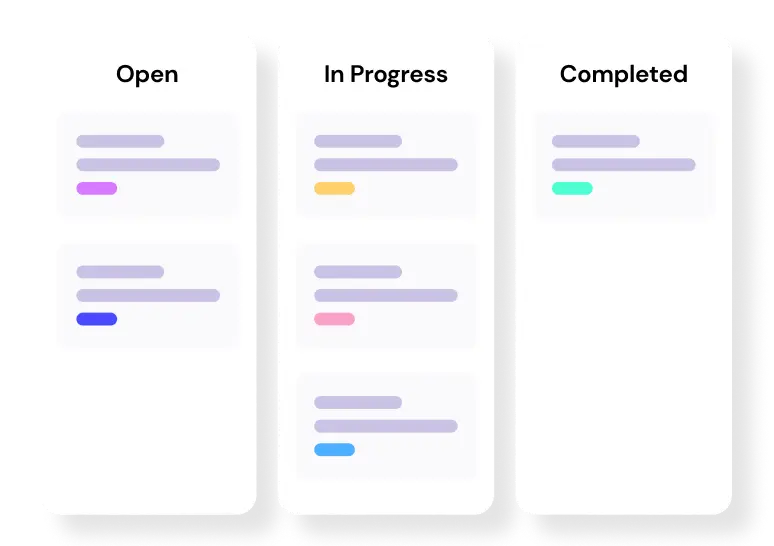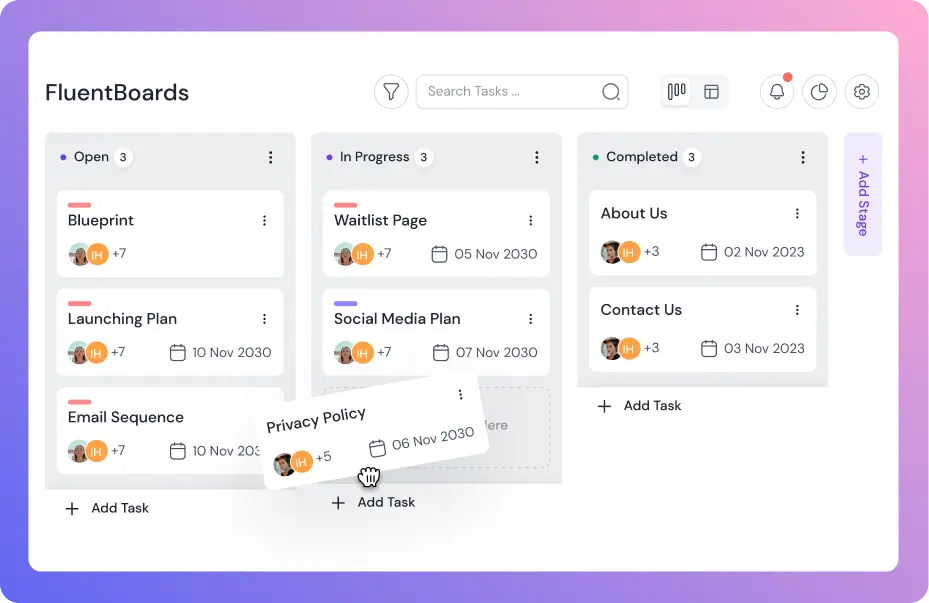
7 Most Impactful Leadership Styles in Project Management That Deliver Real Results
“Management is doing things right; leadership is doing the right things.”
– Peter Drucker
In project management, Drucker’s words highlight leadership as the compass guiding teams toward meaningful goals, while management is the engine, ensuring execution stays on track.
However, even with the best roadmaps, today’s leaders face:
- Shifting team dynamics
- Conflicting stakeholder priorities
- The pressure to act fast without losing clarity
So, how do the best leaders adapt and stay ahead in managing projects?
Well, the answer lies in the approaches they take to lead their teams, and how effectively they mix and match different leadership styles in their workflow.
In this guide, we’ll break down the key leadership styles in project management.
Let’s dive in!
What are the leadership styles in project management?
Leadership styles in project management refer to the project manager’s approaches to motivating, guiding, and influencing their project team to achieve project goals.
These approaches include the behaviors, methods, and decision-making strategies a leader uses throughout the project lifecycle.
Back in 1939, psychologist Kurt Lewin and his crew identified three foundational leadership styles:
- Authoritarian (autocratic)
- Democratic (participative)
- Laissez-faire (delegative)
But as time progressed, team management was no longer limited to just these three fundamental styles. To better fit diverse team dynamics, these styles evolved over the years.
And, building on these foundational models, many modern and industry-specific leadership styles have emerged, such as
- Visionary
- Affiliative
- Pace-setting
- Coaching
Depending on how you want to manage your project team, you can choose the style that suits you best, or even blend different strategies.
However, no matter which style you adopt, the core focus of these styles always remains the same:
- Inspiring and encouraging the team to stay aligned with objectives
- Providing guidance, direction, and clarity on roles and responsibilities
- Shaping team culture and the work environment to foster collaboration and productivity

Level up your WordPress project management game with this Trello equivalent solution – where limitless possibilities come at an unbeatable price!
7 Proven Leadership Styles in Project Management
Let’s dive into leadership styles that offer the flexibility to choose the best fit for each project.
Autocratic or directive leadership style
Autocratic leadership, also known as directive leadership, defines a leader or manager who provides clear direction, makes decisions independently, and expects immediate compliance from the team.
In this approach, the leader drives the team forward like a one-person show, where confidence, quick decisions, and full trust in their plan take center stage.
For example, when the team is under pressure, you often hear a manager say, “ I’ve figured out the best way, so please just do what I say.”
Leaders with this style:
- Give clear and direct instructions without asking for team input
- Decide task distribution and project goals independently
- Provide instructions that leave no room for confusion
- Maintain strict control over tasks, timelines, and outcomes
- Motivation through rewards, corrective feedback, and clear consequences
Democratic or participative leadership
Democratic leadership, often called participative leadership, is a collaborative style where managers involve team members in decision-making, aiming to build commitment and generate new ideas.
Instead of dictating tasks, leaders genuinely ask, “What do you think is the best way?” believing shared input sparks the most effective outcomes.
By prioritizing conversation over command, democratic leaders typically:
- Seek input before finalizing decisions
- Encourage open discussions to generate ideas
- Aim for agreement on goals and solutions
- Build ownership by involving everyone
- Show empathy and strong listening skills to deepen trust
Laissez-faire or delegative leadership style
“You’ve got this—take the lead, and just let me know if you need anything.”
This one sentence sums up the core of laissez-faire leadership, also known as delegative leadership.
Unlike directive managers who map out every step, laissez-faire style leaders trust their team to lead the way.
They believe in autonomy, stepping back so team members can take charge, manage tasks, and solve problems as an unofficial project manager.
A laissez-faire leader:
- Allows team members to own their tasks and solve problems without micromanagement
- Intervenes only when necessary, assuming the team knows best
- Encourages individuals to take responsibility for outcomes.
Visionary leadership style
Visionary leadership is a forward-thinking style where project managers inspire teams by crafting and communicating a compelling long-term vision.
At its core, this style focuses on answering:
“Why does this work matter?”
This approach centers on “selling the vision” to the team. And, by connecting everyday tasks to a bigger purpose, visionary leaders motivate teams, especially during change or uncertainty.
They:
- Define long-term goals aligned with the organization
- Communicate the “why” to build buy-in
- Invite feedback to refine the vision
- Use encouragement over micromanagement
- Focus on future outcomes rather than immediate results

Step into the Future of Project Management!
Affiliative leadership style
The affiliative leadership style is all about prioritizing emotional well-being and building strong relationships within the team. This style is all about people first, tasks second.
If there’s tension in the room, they’re usually the first to step in, not with orders, but with a calm voice and a listening ear.
For example, you’ll often hear, “How’s everyone doing?” or “We’re a team first—how can I help you?” They want team members to feel heard, valued, and supported, especially during tough times.
Their usual approach is to:
- Check in on how team members feel, not just what they do
- Encourage collaboration and emotional openness
- Offer regular praise and positive feedback
- Help smooth over conflicts with empathy
- Create a safe, connected work environment
By prioritizing emotional well-being, this style reduces turnover by 20% in high-stress environments (Gallup, 2022).
Pace-setting leadership style
The pace-setting leadership style centers on achieving high-performance standards at a rapid pace. Managers who adopt this style lead by example, setting ambitious targets and expecting their team to mirror their speed and precision.
Phrases like “Follow my lead, we need this done right, now” define their mindset.
By driving results through action over conversation, pace-setting leaders:
- Set sky-high expectations for speed and quality
- Lead by example, demonstrating how tasks should be done
- Intervene quickly if results fall short, often taking over tasks
- Prioritize short-term goals over long-term development
- Focus on correcting errors rather than guiding improvement
Coaching leadership style
The coaching leadership style is a collaborative approach focused on long-term growth, helping team members develop skills, set personal goals, and align them with organizational objectives.
This approach relies on two key things: team members being –
- Open to feedback
- Motivated to act
By connecting individual aspirations with organizational goals, coaching leadership makes professional development both personal and purposeful.
This style also focuses more on steady progress that encourages team members to “give this a go,” a mindset of “try, learn, and grow.”
With this approach, here’s how coaching leaders work in practice:
- Encourage collaboration, treating each team member as a valued partner
- Help members understand their strengths and areas for growth
- Provide regular feedback to help them improve over time
- Build trust through empathy and really listening to their concerns
- Enhance capacity through personalized learning to build skills
- Grow the capability of team members by improving their contribution
How to Choose the Best Leadership Style for Your Project
The most suitable leadership style for you and your project team will depend on several external factors, such as:
- The goals of your project
- Time constraints and deadlines
- Your team structure and dynamics
- Stakeholder expectations
- External pressures and risks
Remember, choosing the right leadership style for your project team isn’t about selecting the “best” one overall; it’s about finding what works best for your unique team.
However, to help you out, here’s a quick overview of which leadership style is best fit for which types of projects –
| Leadership Style | When to Use |
| Autocratic | Ideal for urgent, high-pressure situations where quick decisions and clear direction are essential. |
| Democratic | Effective when collaboration is key. This style boosts morale, team engagement, and shared ownership. |
| Laissez-faire | Works well with skilled, self-motivated teams that thrive with autonomy and minimal supervision |
| Visionary | Great for setting direction in new initiatives or refocusing a team toward long-term goals |
| Affiliative | Useful in times of conflict or stress. It helps in building harmony and strengthens emotional bonds. |
| Pacesetting | Best for high achievers. Drives high performance by setting ambitious goals and leading by example.. |
| Coaching | Perfect for long-term growth. This style focuses on developing individual strengths and building future leaders. |

FluentRoadmap Comes Free with FluentBoards Pro!
Tips for Mixing Multiple Leadership Styles
A project manager may need to adjust their leadership style based on team dynamics, project complexity, and the unique challenges of each project phase. In fact, in some cases, you might need to blend two or more leadership styles to guide your team and project toward success.
To help you do that, here are some practical tips for effectively combining multiple leadership styles in your project management approach:
- Set high standards for performance and provide feedback using autocratic leadership for quick decisions
- Inspire with visionary leadership by connecting tasks to a larger purpose and goals
- Delegate ownership with laissez-faire leadership to empower self-driven teams and provide feedback
- Build trust with affiliative leadership through empathy, open dialogue, and providing feedback
- Encourage democratic leadership by seeking input for innovation, providing feedback, and fostering collaboration
- Balance pace-setting leadership with support, providing feedback to ensure high performance without overwhelm
Blend Styles, Strengthen Projects, Lead Confidently!
The key to strong project leadership is blending styles to fit each unique situation—there’s no one-size-fits-all.
It is all about making thoughtful choices that fit the context, inspire action, and ultimately strengthen your projects.
So, start by clearly understanding your project goals and what you want to achieve. Then, identify which leadership style best suits your team.
And most importantly, learn to mix and balance different styles to drive meaningful results.
Thank you for taking the time to read this article! We hope these insights help you lead with confidence, adaptability, and purpose.
Have a great day!
Let’s redefine project management with FluentBoards!
Get Tips, Tricks, & Updates
We won’t send you spam.









![how to create a project management workflow [x steps] (2)](https://fluentboards.com/wp-content/uploads/2025/11/How-to-create-a-project-management-workflow-x-steps-2-768x402.webp)





Leave a Reply